Red Sox Draft Breakdown: Tanner Houck
- Gus Weinstein
- Mar 10, 2018
- 4 min read

Last night the Boston Red Sox drafted University of Missouri right-hander Tanner Houck 24th overall.
A three-year starter for the Mizzou Tigers, in 2014 Houck was drafted in the 12th round by the Blue Jays out of high school, but opted to attend college instead. Though recruited based on potential — teams liked Houck’s ideal frame and mid-90s velocity, but not enough for him to forgo college.
Houck didn’t take the college stage lightly. Freshman year, Houck pitched well for Tim Jamieson and the Tigers, launching himself into early first round contention. The following summer, Houck pitched for the USA Collegiate National Team as their ace — posting an emphatic 2.16 ERA.

Three years at Mizzou — check out Houck’s strikeout to walk ratio.
At 6-foot-5, Houck’s big frame and powerful throwing arm combine to create a low-risk, high-reward prospect. A stoic warrior on the mound, the Illinois native rarely shows emotion and works unapologetically fast — much like Red Sox’s current ace Chris Sale.
Plus-velocity, which can range anywhere from 92–95 mph, sometimes touching 98 or 99 mph, Houck leaves nothing to chance.
Downward movement on Houck’s fastball helps him pound the strike zone early, allowing him to get ahead of batter as often as possible.
Off-speed pitches seem to be Houck’s calling card. At Mizzou, working to improve drastically at off-speed control and usage rates, Houck developed snap and velocity variance on both his curveball and his changeup in 2016 and 2017.
Houck prides himself on technique. Driven by his 3/4 arm slot, both Houck’s fastball and off-speed stuff possess downward action. Much like Chris Sale and Max Scherzer's’ primary pitches, Houck’s sinking two-seam fastball is dictated by the arm angle or “arm slot” you see below.
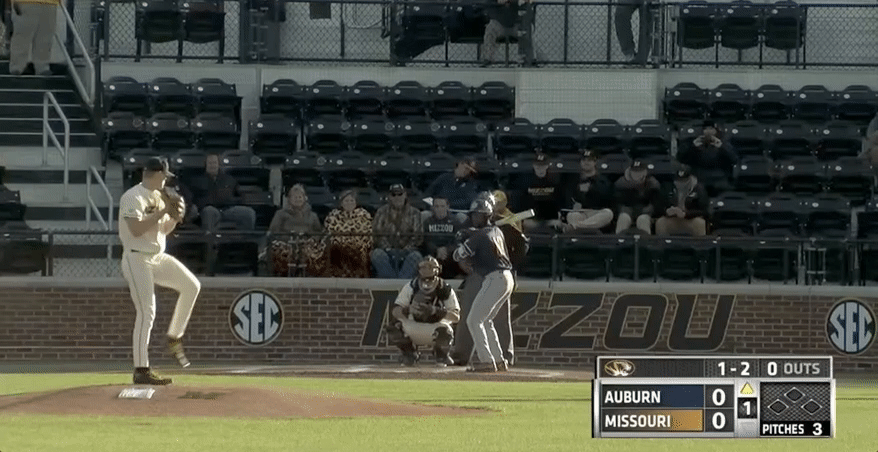
Slowed down Houck’s delivery to emphasize the 3/4 arm slot. Two-seamer here.
Difficult for right handed batters to pick up when behind in the count, and even more dangerous when thrown to left handed batters down and away, Houck’s two-seamer helped move him into fourth place all-time in Mizzou history in strikeouts (292) — a mark that ranks second among three-year players, trailing only former first-round pick Kyle Gibson.

Two-seamer down and away from left handed batters, just straight disappears.
The sinking motion Houck utilizes is noticeable throughout all three of his pitches. Much like Scherzer, and even Marcus Stroman, Houck’s go-to pitch — the two-seam fastball — works down and in on righties, and down and away to lefties.
Off-Speed Pitches
Houck not only has one of the most dynamic sinking fastball in the draft, the three-year starter also possesses two tricky whiff inducing off-speed pitches to complement his fastball.
Batters can struggle to distinguish pitch type from the same arm slot. What makes Houck’s delivery so special is an ability to deliver all three pitches from the same release point, regardless of the situation — which maked pitch identification difficult for most college hitters.
The Curveball
Let’s start with the curveball. To showcase Houck’s whiff ability, here’s a couple curveballs to keep in mind.
Left handed batter, 2–2 count, working out of the stretch, unloads this perfect curve into the dirt. With the 3/4 arm slot, the ball comes in at an unusual angle for left handed batters. Even though baseball history tells us otherwise, Houck matches up well against left handed batters for one simple reason: arm angle
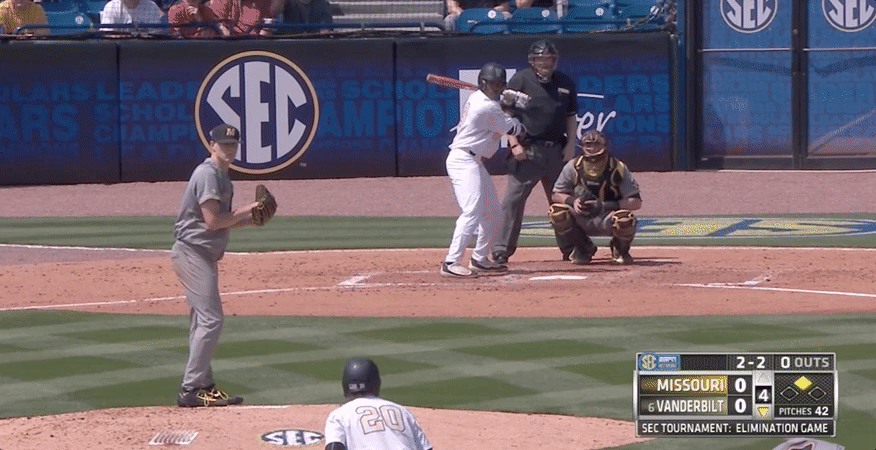
Watch where this starts and ends, unbelievable break and snap.
Right handed batter, 0–2 count, Houck goes to the curve against the righty to get the strikeout — this time looking. Again, another surreal sweeping curve with no remorse. Watch where the pitch starts and ends.
Control and ability to throw curves for strikes will allow Houck to control the strike zone in the minors and hopefully move quickly up the Red Sox’s system.
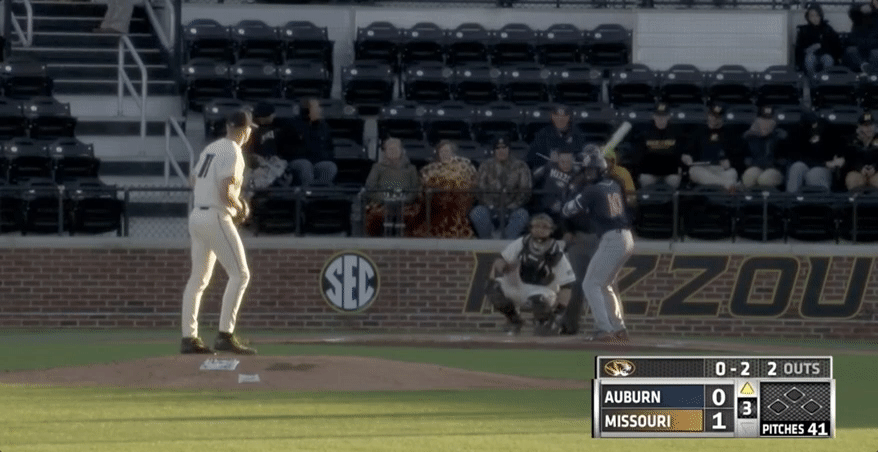
Right-handed batter, 0–2 count. Watch the pitch make the batter buckle
Houck’s curveball isn’t quite a 12–6, but more of a sweeping curve that starts at 2 and ends at 5. For Houck to develop into an above-average strikeout pitcher at the next level, he needs to keep curveballs out of the strike zone when needed.
The Changeup
I distinguish three different pitches in Houck’s arsenal.
The changeup Houck uses breaks and resembles a regular 12–6 curveball. At 81 mph, the break looks almost identical, but if you look closely, you can identify where they differ.
In this next clip, you’ll see where the snap on the end of the pitch is somewhat different. While Houck’s curve breaks almost 3–4 feet, the changeup only sinks about 1.5 feet.
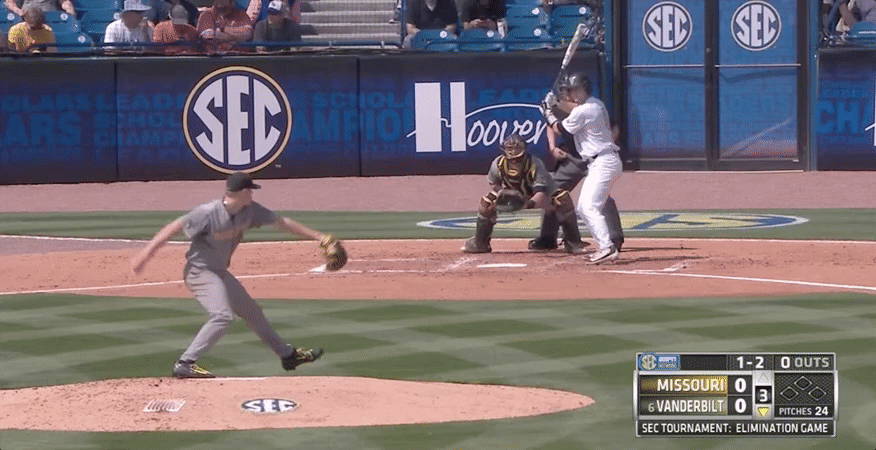
Right handed batter, 1–2 count. Batter clearly looking for the fastball in the lower third of the strike zone.
This changeup, thrown to the left handed batter, starts in the middle of the strike zone and dips out quickly ending right around the batter’s ankles. The velocity variance from Houck’s two-seamer, around 95 mph, to the changeup, around 80 mph, will create a high-whiff rate in the minors.
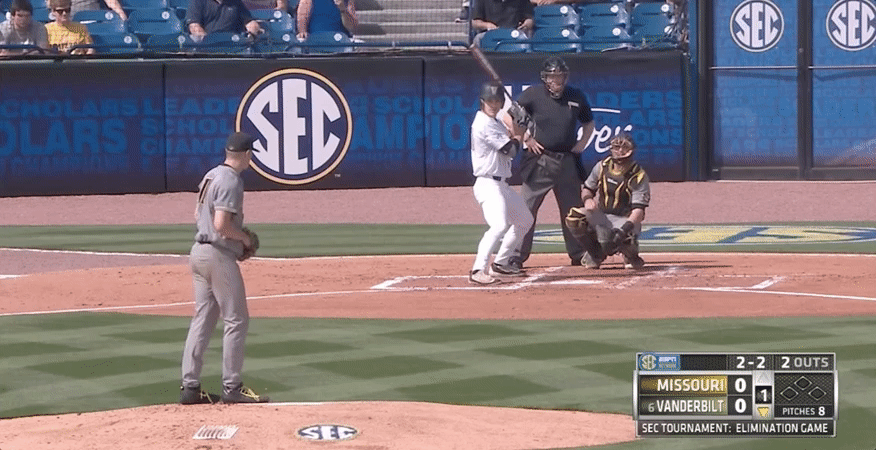
Outlook
A highly anticipated prospect, Houck posted an ERA of 3.26 in 44 starts in college. For comparison, Max Scherzer, also at Mizzou, posted an ERA of 3.32 over 31 starts.
Both Mizzou products, Houck and Scherzer exhibit some telling similarity. Both pitchers throw two-seam fastballs that work down and in on righties. Houck’s arm angle replicates Scherzer’s. Both trust their off speed stuff and are tough against righties as well as lefties.

Similar earned run averages, Scherzer struck out more batters, but Houck has 300 innings pitched under his belt.
The stats are interesting, but they don’t tell you everything. Comparisons to Scherzer are lofty and may lead to unrealistic, but give Houck 3–4 years in the minors to develop. Remember, it took Scherzer 6 years to be relevant in the League, nothing happens overnight.
Let’s look at their pitching motion side by side — Houck from the stretch, Scherzer from the windup.
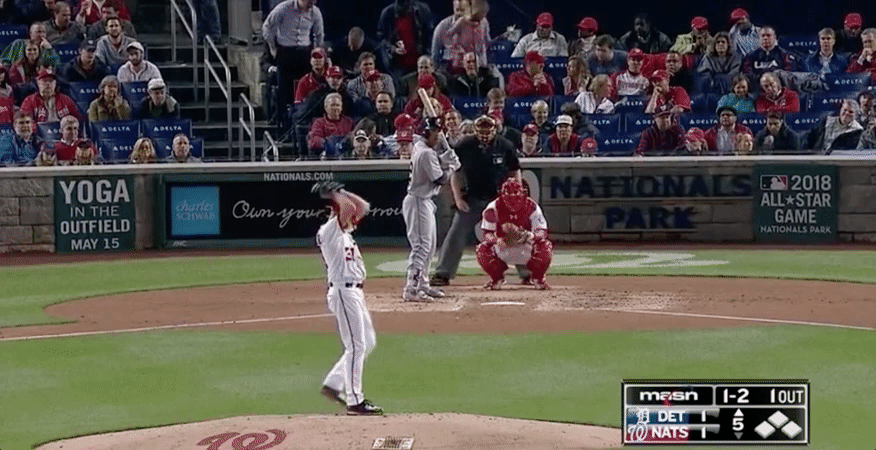

Similar 3/4 arm angle creates enhanced noticeable sinking action in both their fastballs and off speed pitches. Houck’s delivery from the windup lacks Scherzer’s jerky off-kilter traits. Though the release point they share often times appears uncanny.
The Bottom Line
Worst case scenario, Houck could contribute out of the bullpen, with mid-90s stuff and with that unique arm angle, he’d most likely be effective. Best case scenario, the Sox just drafted the next Max Scherzer.
But who knows? I’m just an optimist.





Comments